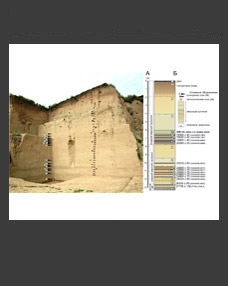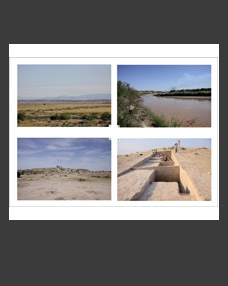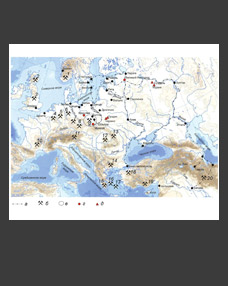Larisa A. Golofast1,*, Denis V. Zhuravlev2,1,**, and Olga S. Rumyantseva1,***
1Institute of Archaeology RAS, Moscow, Russia
2State Historical Museum, Moscow, Russia
*E-mail: larisa_golofast@mail.ru
**E-mail: denzhuravlev@mail.ru
***E-mail: o.roumiantseva@mail.ru
Keywords: Pontic region, glass blown vessels, flask shaped as a double-sided image of Medusa head, faceted amphorisks, SEM-EDS, chemical composition, Roman glass, natron glass of Syro-Palestinian origin, plant ash glass.
The article presents three blown glass miniature flasks from the collection of the State Historical Museum: a flask shaped as two Medusa heads facing in different directions and two faceted amphorisks. The archaeological context of the vessels is unknown. The circumstances of finding the closest analogies to the Medusa-shaped flask are also unknown, and the proposed datings are justified by the stylistic proximity to the few finds of similar flasks of other variants originating from dated contexts. The vessel is made of natron glass of the Syro-Palestinian origin. The case of faceted amphorisks is clearer, several such vessels were found in dated complexes, which gives grounds to date them to the second half of the 1st – early 2nd century AD. It is difficult to determine the centre or region of production of small vessels by their area, since the origin of the overwhelming majority of them is unknown. Few flasks, the provenance of which is known more or less accurately, come from the Syrian-Palestinian region, from the eastern coast of the Adriatic, from the Northern Pontic and Transcaucasia. However, in terms of the number of finds, none of the regions stands over the others. It can be assumed that one of the published faceted amphorisks (judging by their quality of manufacture and the chemical composition of glass, based on the halophytic plant ash) was made in some local workshop following examples brought from the main centre of their production.
DOI: 10.31857/S0869606324040111, EDN: KIBMJR







